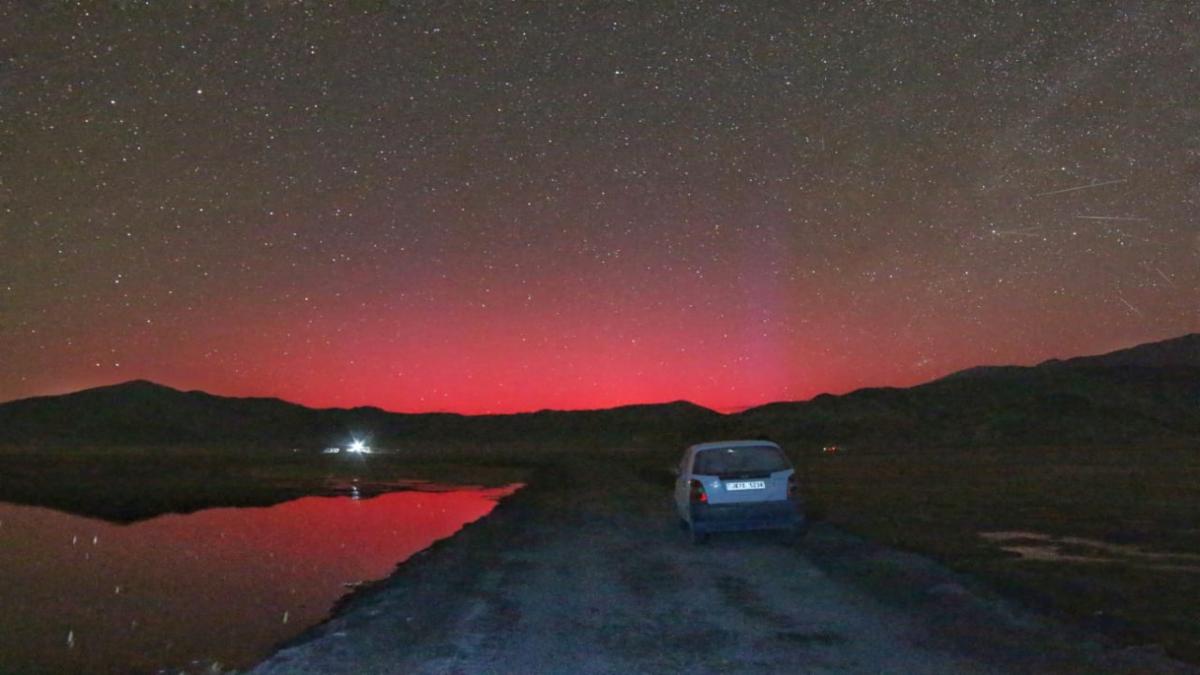Article Body
On a crisp May night in 2024, the Himalayan sky above Ladakh shimmered in hues of green and violet. Locals in Leh stood in awe, smartphones pointed skyward, capturing a spectacle they never thought they’d witness: auroras borealis—over India. The social media frenzy that followed was dazzling, but beneath the beauty lay a more urgent truth—Earth was just brushed by one of the most intense solar storms of the decade.
What Really Happened Over Ladakh?
According to a recent joint statement by the Indian Institute of Astrophysics (IIA) and the National Centre for Space Studies (CNES-France), a series of Coronal Mass Ejections (CMEs) erupted from the sun between May 8–10, 2024. These CMEs carried billions of tons of charged particles, hurtling toward Earth at nearly 3 million kilometers per hour.
Their impact was registered globally, triggering geomagnetic storms that reached G4 level (Severe) on NOAA’s space weather scale. But Ladakh, owing to its high latitude and minimal light pollution, became an unexpected hotspot for visible auroras—a phenomenon rarely witnessed outside polar regions.
“We were surprised at the latitude these auroras reached. The magnetic field lines were so disturbed that they extended their footprint all the way down to northern India,” said Dr. Radhika Menon, solar physicist at ISRO’s Space Applications Centre.
Why Is This Happening Now? A 2024/2025 Solar Cycle Surge
We’re now approaching Solar Maximum, the peak of the 11-year solar cycle (Cycle 25), expected to climax between late 2024 and mid-2025. This cycle, already more intense than forecasted, is pushing the sun to unleash a flurry of solar flares, sunspots, and CMEs.
NASA's Solar Dynamics Observatory recorded over 230 significant sunspots in April 2024 alone, a number 38% higher than predictions made in 2020. The result? A planetary magnetic shielding stretched to its limit, with technological systems at increasing risk.
Are We Prepared for the Next Big Solar Blast?
While Ladakh’s auroras were visually enchanting, the underlying geomagnetic storm posed serious threats:
-
Airline rerouting: Flights over polar routes had to be diverted due to radio blackouts.
-
satellite drag: Increased atmospheric density forced emergency orbit corrections for over 12 low-Earth orbit satellites, including two Starlink batches.
-
GPS disruption: Survey teams across north India reported errors in geolocation accuracy up to 30 meters.
-
Power grid vulnerability: NTPC and Power Grid Corporation of India were placed on alert, though no major blackouts were reported.
A leaked internal memo from the Indian Ministry of Electronics and Information Technology (MeitY), accessed by Hey Colleagues, warned of “critical infrastructure vulnerabilities” in older grid management systems during solar-induced magnetic fluctuations.
What Does This Mean for India and the World?
“This isn’t just about pretty lights. This is about anticipating a space weather event that could cripple communications, satellites, and even power grids—especially in developing countries with older infrastructure,” warned Dr. Jerome Lavigne, director of the CNES Solar Observatory.
India, with its rapidly expanding digital ecosystem, is increasingly vulnerable. As 5G towers, IoT devices, and autonomous systems scale across cities and villages, even a medium-strength CME could trigger cascading failures if protective protocols aren't updated.
FAQ (People Also Ask Style)
Q1: What caused the northern lights over Ladakh in May 2024?
A rare solar storm, specifically Coronal Mass Ejections from the sun, triggered geomagnetic activity that made auroras visible at lower latitudes.
Q2: Are solar storms dangerous to human health?
They don’t affect human health directly on the ground, but astronauts, flights, and electronic infrastructure are at significant risk.
Q3: Can solar storms cause power outages or internet shutdowns?
Yes. Powerful storms can disrupt satellites, GPS, undersea cables, and power grids if not adequately shielded.
What Should You Do or Watch for Next?
-
Follow ISRO’s space weather alerts.
The Indian Space Weather Monitoring portal (www.iswim.gov.in) now issues real-time alerts. -
Expect more auroras in India
If skies are clear in Kashmir, Himachal Pradesh, or Sikkim over the next 6–12 months, we may see more auroras during Solar Maximum. -
Businesses should audit cyber-physical resilience
Telecom, aviation, and fintech industries must test shielding, backup power, and signal redundancy. -
General public: Avoid GPS-dependent navigation during storms.
Apps like NavIC, Maps, and drone flight systems may behave erratically during such events.
Expert Tip: Understand the Difference Between Solar Flares and CMEs
“Solar flares release electromagnetic energy, while CMEs eject plasma. It’s the latter that triggers auroras and can mess with satellites,” explained Dr. Aarti Jha, researcher at Aryabhatta Research Institute of Observational Sciences (ARIES).
The Bigger Picture: Is Earth Entering a New Era of Space Weather Risk?
Google Trends shows a 600% spike in searches for “solar flares today,” “aurora India,” and “space weather forecast” in June–July 2024. This renewed public attention is prompting agencies worldwide to invest in space weather resilience—a field once confined to academic circles.
ISRO has quietly begun work on 'SuryaNet', a next-gen solar storm monitoring network in collaboration with ESA and NASA, expected to go live in early 2025.
So, What Should We Ask Ourselves?
If auroras in Ladakh are the canary in the coal mine, are we as a nation—digitally dependent, infrastructure-strained—prepared for the next solar tempest? Or will we keep staring skyward, entranced, while our networks flicker and fail?
What are your thoughts on India's space weather readiness?
Share this story with someone who relies on GPS or runs a digital business. Comment if you spotted the auroras.

Comments